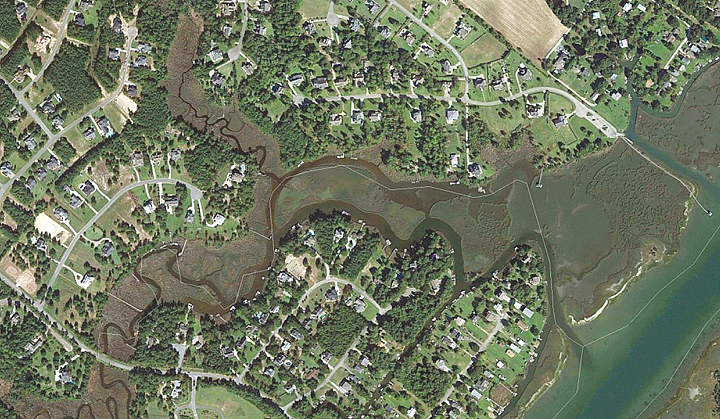New environmental proposals from the federal government could have an impact on how ditches, streams, ponds and other small bodies of water are regulated in New Hanover County and throughout the country, potentially affecting land development.
The Waters of the U.S. rule, proposed by the Environmental Protection Agency as part of the Clean Water Act, would expand where the EPA can regulate the water quality in bodies of water. The regulation is currently being challenged in the courts and a federal court has issued a stay on the rule while the government appeals the decision.
The rule states bodies of water within 1,500 feet of navigable waterways, such as the Intracoastal Waterway or the Cape Fear River, may be placed under federal jurisdiction.
The definition change will cause land developers and property owners to review their future projects and flood maps. Existing permits for retention ponds and other water-related construction will not be affected by the Waters of the U.S. alteration, said David Syster, president and environmental consultant at Southern Environmental Group.
All bodies of water within 1,500 feet of navigable waterways included in the federal government’s 100-year floodplain and all wetlands within 4,000 feet of navigable waterways that have a significant connection to a ditch or stream will fall under the new federal rule, he said.
Bodies of water within 1,500 feet of the ordinary high water mark, which is defined in the Shoreline Management Act as a biological vegetation mark, will also be under the new rule. Wind, waves, erosion and other natural phenomena, along with land use changes, can cause high water marks to shift.
U.S. Rep. David Rouzer, R-N.C., said he agreed with the Sixth Court of Appeals ruling that the regulation cannot be enforced nationwide.
“This rule change would have extended the EPA’s regulatory reach to practically any body of water — including water puddles in a ditch after a rain storm. No Washington bureaucrat should be able to dictate what our farm families, small businesses, local governments and citizens do on their property after a significant rainfall,” Rouzer said.
Syster said many people who oppose the Waters of the U.S. definition change because of how it is written.
“I understand the need for some clarity. There are a lot of issues that need to be resolved,” Syster said.
Syster also said the federal regulators are still working on details about when a hurricane or significant rain storm will subject a property owner to the Waters of the U.S. rules.
While Syster didn’t take a position on the rule, Larry Cahoon, a biology professor at the University of North Carolina Wilmington, said the rule would help improve environmental regulation.
“I think the rule recognizes that there is a ground water connection,” he said. “Research does show that even isolated wetlands do have a hydrological connection with nearby streams. Prior to this, the rules had tended to act if there was not a surface connection between navigable waters and contiguous bodies of water, and that is simply not true.”
Cahoon also said the rule will help protect ground water from commercial pollution.
“The Clean Water Act, by and large, has ignored ground water,” he said. “Ground water is an important thing. It’s a source of drinking water for a lot of folks. It makes sense to recognize the connection that does exist between ground water and navigable bodies of water.”
However, Cahoon added that determining which noncontiguous bodies of water have significant connections to waterways already under federal jurisdiction will be a challenge.
“The question of significance is a judgment call, and there might be some disagreement on that. There is no clear boundary. This is nature, and nature is fuzzy and messy,” he said. “With these rules, the devil is always in the details.”
email [email protected]




